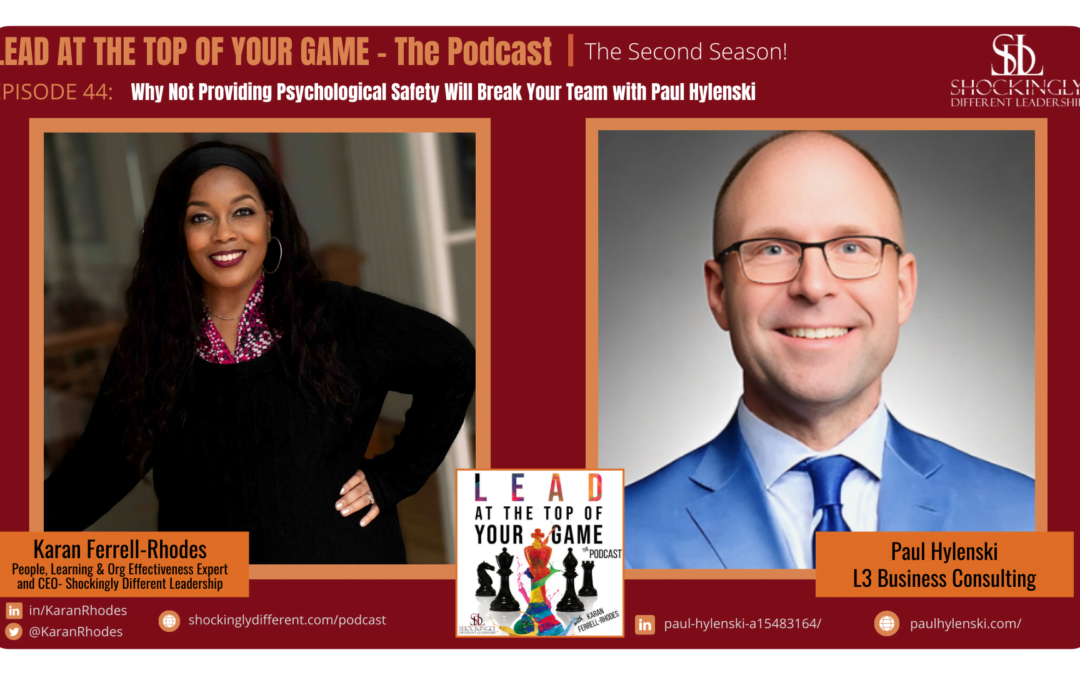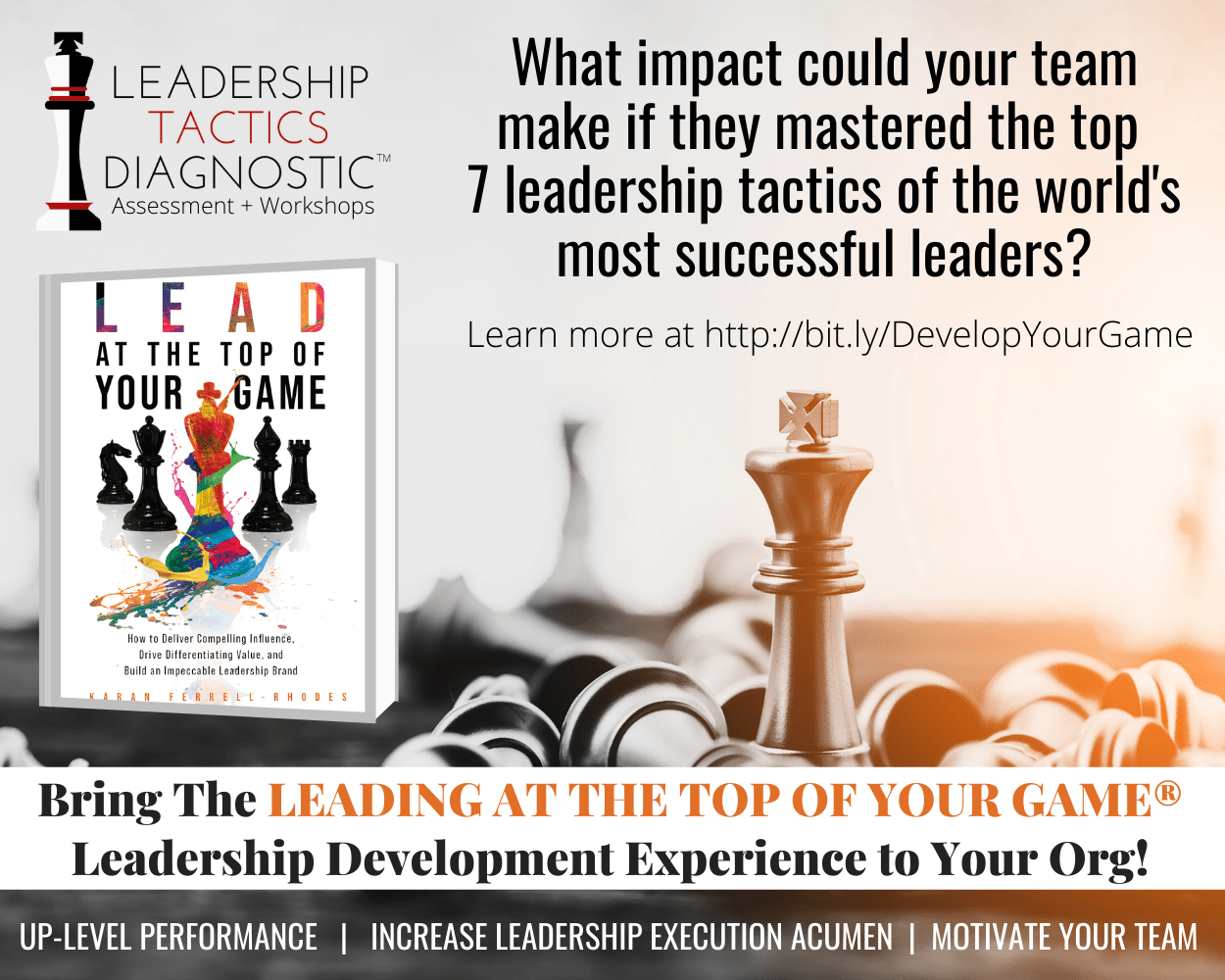IN THIS EPISODE KARAN FERRELL-RHODES INTERVIEWS PAUL HYLENSKI . . . .
Ready to infuse your organization with the power of a growth mindset? Craving to bid adieu to lackluster performance and turbocharge your productivity? Eager to sharpen your leadership prowess? Prepare yourself for a transformative journey that will skyrocket your insights and lift you to uncharted professional and personal growth territories. Get set to ascend to unprecedented altitudes, all while soaring through the dynamic landscapes of business and self-improvement with Paul Hylenski.
Paul Hylenski From Marine Corps foundations to the heights of aerospace innovation, Paul stands as a visionary whose leadership philosophy has not only reshaped the industry but also nurtured the potential within every member of his team. He is a multifaceted professional making waves in both the aerospace industry and the realm of leadership. With roles as an Author, Composites Operations Leader at Middle River Aerostructure Systems (ST Engineering), and President at L3 Business Consulting, Paul brings a wealth of experience to the table.

Posted by
SDL Media Team
Rather view our video podcast?

WHAT TO LISTEN FOR:
- What are the challenges of being a leader?
- How do you keep your staff driven?
- What contributes to your ability to make better decisions?
- How do you lead with courage and agility?
- Why is changing culture important?
“I think the biggest thing is vision. You have to, as a [great] leader, project vision.”
FEATURED TIMESTAMPS:
[04:48] From Childhood Dreams to Soaring Heights: A Journey in Aerospace and Leadership
[07:03] Unveiling Aerospace Marvels: The World of Composites Manufacturing and Transformative Leadership
[08:30] Balancing People, Pandemics, and Production: Navigating Supply Chain Disruptions in Aerospace Manufacturing
[10:26] Guiding Teams through Turbulence: The Power of Visionary Leadership in Aerospace Manufacturing
[13:12] Paul’s entry into the LATTOYG Playbook
[16:09] Fostering Psychological Safety: Building a Strong Foundation of Inclusion, Learning, and Contribution
[20:33] Empowering Decisions: Balancing Group Consensus and Leader Insight for Challenge Safety
[24:46] Signature Segment: Paul’s LATTOYG Tactics of Choice
[30:07] Leadership and Transformative Coaching: Unveiling the Five T’s for Growth and Success
[36:08] Signature Segment: Karan’s Take
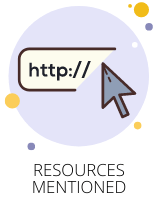
ABOUT PAUL HYLENSKI:
Paul Hylenski is a distinguished Aerospace Composites Manufacturing Operations leader based in Middle River, MD. With a remarkable journey that began as a helicopter mechanic in the Marine Corps, Paul’s career has spanned over 15 years of dedicated service in the aerospace industry. His expertise covers various aerospace product lines, where he has adeptly managed both assembly and composite fabrication departments, consistently driving quality and efficiency.
Having also excelled as a six sigma blackbelt, Paul’s focus on reducing defects and enhancing production has earned him a reputation for transformative process improvements. However, his passion extends beyond operational excellence. Paul fervently advocates for leadership’s profound impact on team members’ lives and professional growth.
Paul’s visionary leadership philosophy centers around the idea of implementing psychological safety within the aerospace manufacturing realm. Recognizing that leadership carries the weight of shaping the work environment, he has championed integrating inclusive safety, learning safety, contributing safety, and challenging safety into his leadership style. This approach enhances team dynamics and fosters a culture of innovation, accountability, and growth.
Paul’s commitment to elevating the industry’s standards and nurturing the potential of his team members is epitomized in his groundbreaking book, “Coaching for Growth.” Within its pages, he outlines a comprehensive five T’s method that guides leaders in effectively coaching their teams, fostering an environment of trust, learning, and continuous improvement.
LINKS FOR PAUL:
- Website: https://paulhylenski.com/
- LinkedIn: https://linkedin.com/in/paul-hylenski-a15483164/
- Twitter: https://twitter.com/phylenski
PEOPLE AND RESOURCES MENTIONED:
- Article: What Is Psychological Safety at Work? How Leaders Can Build Psychologically Safe Workplaces
- On-demand Webinar: https://business.calm.com/resources/webinars/a-new-approach-for-creating-a-psychologically-safe-workplace/
- Article: 8 ways to create psychological safety in the workplace
- Overview: The Lead at the Top of Your Game Leadership Development Experience
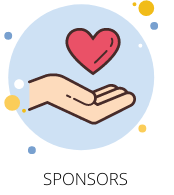
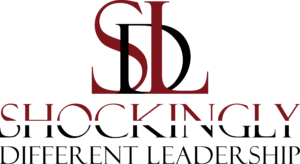
Episode Sponsor
This podcast episode is sponsored by Shockingly Different Leadership, the leader in on-demand People, Talent Development & Organizational Effectiveness professional services, all designed to up-level leader capability and optimize workforces to do their best work.

Click the plus button on the tab to access the written transcript:
Episode 44 | Why Not Providing Psychological Safety Will Break Your Team with Paul Hylenski
Paul Hylenski 00:00
I’d like to say that I’m kind of like the Wizard of the Oz, right? I’m trying in the background to keep everything moving. So that you know, our the great team that I get to work with, they get to just focus on building high quality aerospace parts, they don’t have to worry about all that stuff.
Voiceover 00:19
Welcome to the “Lead at the Top of Your Game” podcast, where we equip you to more effectively lead your seat at any employer, business, or industry in which you choose to play. Each week, we help you sharpen your leadership acumen by cracking open the playbooks of dynamic leaders who are doing big things in their professional endeavors. And now, your host, leadership tactics, and organizational development expert, Karan Ferrell-Rhodes.
Karan Rhodes 00:54
Hey there superstars. This is Karan and thanks for joining another episode designed to help you better lead at the top of your game. You know, psychological safety in the workplace is a shared belief held by members of a team that it’s okay to take risks, to express their ideas and concerns, to speak up with questions and to admit mistakes, all without fear of negative consequences. Now, raise your hand if you’re working in this type of environment right now. If I was a betting woman, which I’m not, I’d guess that the majority of you out there aren’t working in that type of environment right now. But to better help us understand how leaders can build a psychological safety net for their teams. We have on today’s show Paul Hylenski. He’s an aerospace composites and manufacturing operations leader, which is a mouthful, but he’s also the author of the book “Coaching for Growth; Strategies for Exponential Growth, Empowerment of Your Team, and Tips for Eliminating Poor Performance.” For the past 15 years, he’s worked in multiple aerospace product lines, managing both the Assembly and composite fabrication sections of the business. Additionally, he has worked as a Six Sigma Black Belt, where business focusing on reducing deficits and improving output. Paul is extremely passionate about leadership because he feels that as leaders, we have the greatest responsibility to be able to make our team’s lives better, and to help them grow in their own careers. And he spent his business career changing the culture by implementing psychological safety into the aerospace manufacturing industry. Now listen closely because he has a ton of thought leadership to share. And be sure to just stay tuned for just two minutes after the episode to listen to my closing segment calls Karan’s take where I share a tip on how to use insights from today’s episode to further sharpen your leadership acumen. And now enjoy the show. Hey there, superstars, this is Karan and welcome to another episode of the latest the top of your game podcast. So today we have a fantastic guest, who’s a little bit different from what we usually had on the norm. He is a leader in his particular industry, a business leader, but then he also wrote a book that is absolutely profound. So we’ll have a multiple lens into leadership by our guest today. So I’m pleased to have on today’s show, Paul, Hylenski. Paul is an aerospace composites manufacturing operations leader. That is a mouthful, yes. And he I’m sure he’s gonna tell us what’s all involved in that. So he really he works for companies. He’s actually employed as a leader in this area specialty. But then he’s also an author of the book called “Coaching for Growth; Strategies for Exponential Growth, Empowerment of Your Team, and Tips for Eliminating Poor Performance.” So he has insights on how to be a leader in the business and then also solve these common people leadership challenges before we are in for a treat. So Paul, welcome to the show.
Paul Hylenski 04:20
Hi, thank you so much for having me. So excited to be here and to talk to you.
Karan Rhodes 04:25
We’re more excited about five times over. So thank you for the gift of your time. So Paul, before we kind of delve into your book and your your story, for as much as you feel comfortable, we’d love for you to get to give us a little sneak peek into maybe your personal and a few highlights of your professional life if you don’t mind.
Paul Hylenski 04:47
Yeah, absolutely. So you know, I started going I grew up Newark, Delaware. So I was a normal kid. My dad actually worked in the aerospace and history. So he worked in the aerospace industry as just a regular worker. And so I joined the Marine Corps in 1999. And, you know, served in the Marine Corps. Funny note, I actually served at the HMX 1, which is the presidential helicopter squadron, I was a helicopter mechanic. Fantastic tour of duty,
Karan Rhodes 05:23
I bet!
Paul Hylenski 05:25
Really learned leadership in the Marine Corps, you know, got my education while I was in the Marine Corps, you know, later went on, when I got my job at the place where I work now, which is an aerospace factory, as a frontline leader, I ended up getting my MBA, my Six Sigma Black Belt certification, and then, you know, just kind of grew within the company. One of the things that I think makes me different is I’m also a pilot. So I’ve, you know, private pilot, I love flying airplanes, and I work in the aviation field. So if anybody is equipped to talk about the safety of flight, it’s the guy flying the plane. So
Karan Rhodes 06:08
Love it. Absolutely. That is just absolutely amazing. And, first of all, thank you so much for your service, I come from a family of individuals in all branches, including the Marines. And so I personally, am very thankful for everything all of our brave men and women do in the armed forces. So thank you for that as well. But tell our audience, first of all, let’s start on your professional side, tell us a little bit more abou you know, what aerospace manufacture composites manufacturing operations is all about? Because I was sharing with the listeners I was sharing with Paul, at the beginning, when we were starting, I was like, I am an HR. I’ve been working in almost every industry. And this is the first time I’ve heard of that this particular areas. So I’m totally curious. So can you share more about that Paul?
Paul Hylenski 07:03
So traditionally, and especially in olden days, airplanes were mostly built with metal, sheet metal sheet metal ripped. So then as time went on, composites started coming in. So there’s literally, yeah, composites. So there’s different types of composites, but most of the aircraft parts in modern day airplanes are built with some type of composite and mostly carbon positive. So the company that I work for, and that I’m, you know, Operations Manager for, I actually run the entire composites division. So basically, from, you know, laying the part up to the machining of it to sending it to our assembly field. So, you know, it’s a vast majority of the business, it is the majority of the people in the business. And so it’s great for me, because, you know, I really have a vision to, you know, change the world and change aerospace, the entire aerospace industry, by human leadership. So I have a huge forum in it, you know, to be able to do that.
Karan Rhodes 08:11
Wow, that’s amazing. One quick question, before we go in depth on the leadership side, in your industry, well, in your particular job function, what is one, give us an example of one challenge that is always top of mind, for your particular.
Paul Hylenski 08:30
So my job deals a lot with, you know, basically, the health of the people, right? So I got to make sure that they are able to work every day, my job is all about the people. But one of the biggest things that I have to worry about now is supply chain disruptions. So COVID-19, and you know, everything happened, supply chain disruptions in the aerospace industry are profound. And it’s impacting every company. And so I’m constantly struggling that because if we were to have some kind of major supply chain disruption, it ultimately goes to where we don’t have work for the people. And then we have, you know, a problem. So constantly in the background, you know, I like to say that I’m kind of like the Wizard of the eyes, and I’m trying in the background to keep everything moving. So that, you know, our, the great team that I get to work with, they get to just focus on building high quality aerospace parts, they don’t have to worry about all that stuff. So and my key focus is them and they know that and then, you know, their key focus is me and the company. So it’s, it’s really transformed the business.
Karan Rhodes 09:43
Fantastic. So, let’s move to your role as leader of those individuals. I know it’s always challenging to keep them focused and motivated, especially with some of the like you said, industry dynamics like supply chain and video, maybe when something happens in the news related to transportation or aviation them having to kind of monitor the industry. But how do you go about trying to be a strong leader for your teams? In? Are there any particular things that you do to try to keep them focused and motivated in a very, very dynamic industry?
Paul Hylenski 10:26
I think the biggest thing is vision. You know, you have to as a leader Project Vision, and I, if I would, if I could tell you a story. While I answer that question,
Karan Rhodes 10:38
Yes, please!
Paul Hylenski 10:39
So, most people have never heard of Samuel Pierpont Langley. So Samuel Pierpont Langley was given a grant by the government. And they basically told him, We want you to be the first person to fly an airplane. So they, they gave him all this money, he was one of the best engineers of the entire time period. And they actually had a Wall Street reporter embedded with him, because they were so sure that he would be the first person to fly. Well, then you had the Wright brothers, who owned a bicycle shop who didn’t have any money. Most of the people that went out to help them were volunteers. But when they asked, you know, Samuel Langley why he wanted to be the first person to fly, he said, because he wanted to be rich, he wanted to be the first to do it. But when I asked the Wright Brothers why they wanted to do it, they said, We want to change the world. Right? They had a vision, and the vision, even though every time they were not successful, every time something happened, and maybe they didn’t hit the target that they wanted, the vision drove them to keep going. So the biggest thing I can tell to leaders, is you have to have a vision, like our vision, and my vision is not to be profitable. It’s not to make money, it is to redefine aerospace manufacturing, as we know it through human leadership. Because if we do that, all of a sudden defects start going away, safety injury started going away. The workforce is super engaged, super empowered, and they are, they’re changing the business, they’re changing the entire industry. So my answer to that question is you got to have a vision, because things are going to come in and they’re gonna, they’re gonna roadblock you.. But the payoff is, I’m going, and I’m going and I’m gonna get through the roadblock. And when we get through the roadblock, we’re going to hit another one. And we’re going to get through that too. Because if leaders don’t have that vision, they hit a roadblock. They don’t know what to do next, you got to be looking down the road saying, I know where I’m going. It’s not going to be easy, but I know where I’m going.
Karan Rhodes 12:48
Thank you for that. Paula, we’d love to also give like one tip or something to our audience as well. So when those roadblocks come, what is maybe one thing that you’ve seen, it’s been successful, to keep your staff driven? Is there an action that you do? Is it just pure coaching? What is one thing that people can do?
Paul Hylenski 13:12
For me it’s communicate. I think, as leaders, we do not realize, like you don’t realize as a leader, the importance of the words that you say, and every action that a company takes every message that a company puts out, everything that a leader says is a form of communication, even the way that my body language is in a meeting is a form of communication. If we have a supply chain disruption, and I go out and I’m like, Oh, wow, I don’t know what we’re gonna do. Right? Then it’s just, it’s panic. Right? And it would have been something I never even maybe said, but it was my action. So as leaders, I mean, the one thing you have to remember, they’re people, you’re leading people, and you work for them, they don’t work for you.
Karan Rhodes 14:03
That’s right,
Paul Hylenski 14:03
You are a servant leader. So you have to communicate because people want information. And in the lack of information, they’ll make up their own. So you might as well just give them what the information that you can and say I got a plan. It’s not going to be easy. But we’re going to get through this together. And here’s the vision. Right. And then if we do that, I think as leaders we set, you know, they know that we’re transparent, they know that we’re trustworthy, they know that we have a plan, and that we have a strategy. And those things will let them follow us even through that times.
Karan Rhodes 14:40
Absolutely. And may I add on to that just yet. And so yes, and, once you do a great job of setting the vision for the team. And one thing that I found also to be helpful is to also treat them as an individual one, meaning, do that quick check in to make sure they understand how they can and should show up to help implement the vision. Sometimes people aren’t comfortable speaking in groups. So even if it’s a quick five minutes and saying, you know, Hey, Paul, either we talked about the vision is there you have any concerns or questions? Or do you know your role in the success because we’re counting on you. Now, even sometimes that little conversation helps out a bit, but poke holes if you think I’m wrong.
Paul Hylenski 15:32
No, I love what you’re saying, because that’s part of what’s, you know, what I wrote about in the book is the feedback loop. Yeah, leaders are great will tell you what you’re doing wrong will tell you, you know, problems. We never really asked, Hey, did you understand the message that I gave? Did you you know, do you have any questions? How did I do? How did I do presenting that, you know, we never asked for feedback, or at least we don’t do it enough. Don’t do it in an app at all. So talk to us a little bit, Paul, about the concept of psychological safety and why that’s so important as a leader to provide. I love it. And so we all are familiar where it came from. But, you know, Amy Edmondson, really made it, you know, famous, you know, she’s the Harvard business professor. So, but, and it’s funny, because nobody thinks of psychological safety in the manufacturing environment. And you bring it up to most people, they’re like, Okay, we’re just gonna be easy on everybody productions gonna go, you know, haywire, it’s, it has this air of like, well, it’s just being nice to everybody. And that’s not what it is, right? So psychological safety for five minute overview of it, or a probably less, but you know, it has four levels. So the first level is inclusive safety. And in any environment, it’s so important one of the humans natural need is to feel wanted and to be a part of a group. So you’re you as psychological safety, in order to really be safe at the base level, you got to feel like you belong, if you work at a company, and you don’t feel like you belong there, you’re never going to feel safe there. So one thing I do is a lot of team oriented activities, a lot of team oriented awards, to drive the team mentality. That way, everybody feels like they’re a part of their smaller team. But then, you know, I have over 250 people, so it’s, the smaller team feeds into the larger team. And how does that serve the purpose, right, so you, you constantly are growing this inclusive safety. The second level is learning safety. So as once you feel good in a group, you feel safe enough to learn with them. So we do a lot of team trainings, because statistically, most people learn better in a team environment than they do on a one on one. We also do different types of mediums for trainings, we do videos, sometimes lectures, we do show Intel, where we actually teach a subject, then make somebody teach that subject again. So because statistically 90% of the people will actually learn more when they are forced to teach the subject.
Karan Rhodes 18:14
Yeah, definitely.
Paul Hylenski 18:15
So. But what that’s doing is that that’s building this learning safety, and they feel comfortable to interact with each other, they feel comfortable to fail. And then what happens to is that learning safety keeps stacking on top of the inclusive safety, because now I feel safe to learn with you. I think that you don’t think I’m an idiot, or you know that I, I’m a failure, so I feel safer with you on and they inclusive safety. So it’s amazing, right? And then the third level is contributing safe. So the best example of this, and one of the ones that I leveraged was Pixar. So they did a study and they asked, Why does Pixar have more award winning movies than Disney? Right? And what they found was that Pixar has this process, and it’s called the brain trust. And in their building, they actually have a room that’s called the brain trust and overtop of it says, everyone’s opinion matters. And when they go in there, the leader starts the meeting with saying, everyone’s opinion matters in this room, there’s a horizontal hierarchy, we need your advice, and we need your feedback. And then he shuts up. Right, and he lets the team talk ideas. And because it’s a horizontal hierarchy, you get bouncing of ideas, you get people that don’t feel bad to say, Hey, that’s not a good idea. I would do it this way. And so we do this with our quality defects, where now I have a cross functional group where we are literally look at every single thing that went wrong in the process. And it’s a horizontal hierarchy. I most of the time, start the meeting with I know the least about this subject. I need your help. And we have workers, engineers, we have everybody in one room and everybody’s given advice and giving feedback. And it’s amazing changes the environment, because then those people go out and they share the message of learning. Right?
Karan Rhodes 20:15
So quick question on that. How do you get to a decision point? I mean, it went. So I understood I love the concept, but when a decision final decision has to be made, is it the group has to make the final decision?
Paul Hylenski 20:29
Yep.
Karan Rhodes 20:29
Or is it your call after you hear all the ideas?
Paul Hylenski 20:33
So it depends on the decision, most of the time, I’d say 90% of the time the group comes to a consensus, because there’s open feedback, there are some times where I have to as a leader say, Okay, I’ve heard this part, if there’s differing opinions, and there really is no group consensus, what I do is I try and this is this is important. So what I do is I say, Okay, we are going to try this. But if this fails, we will pivot and go to the other thing, I am making my decision because of this, this and this. So I explain the why of what I’m doing. And it’s not that the other idea is bad. But I’m saying, This is why I’m making this decision. And if it doesn’t work, it’s okay. Because failure is okay. We’ll just pivot and we’ll go do something else. Right?
Karan Rhodes 21:22
That’s a great out. I love that.
Paul Hylenski 21:24
And the last level, which is the highest level, which most companies and we’ve seen huge failures in this in every industry, but it’s challenge safety. So the biggest thing for all your viewers, leaders are not infallible, we make mistakes. We mess up
Karan Rhodes 21:44
the biggest myth that’s out there is that we don’t make mistakes.
Paul Hylenski 21:47
Oh, my God. So Bill Clinton, when he came into office, the first thing he did was he pulled his cabinet together and said, You have the power to disagree. If you’re not going to disagree with me, I might as well fire you and hire a bunch of computers. And so that’s what I do. And everyone has the power to disagree. And what happens with the leader is, you have to be conducive to the disagreement. So if somebody comes up to you and says, Hey, you made this decision, but here’s how I would have done it, or you’re not looking at this. You can’t grimace and negatively react, because what you’ve just said is don’t ever come back to me with any other concern.
Karan Rhodes 22:29
Right. Right
Paul Hylenski 22:30
You have to be like, oh, you know what, I’ll tell you the growth. Most leaders think that it demeans their their power or their authority. It doesn’t. It doesn’t at all, it makes you make better decisions. Because I have people have stopped me and said, Hey, that’s not a good idea. And I’m like, Well, it seems good in my head. And they’re like, Well, you’re not seeing the blind side, you’re not seeing how this, this is going to affect people. And I’d be like, Wow, I didn’t see that. Right. And so now all of a sudden, bam, just like that, I’ve made a better decision for the group. Because I have all the sides now. And it came from them feeling comfortable to challenge. And that’s challenged the leader that’s challenge existing processes. You know, so many times new people come into a job, and they get somebody that says, well, that’s just the way we’ve always done it. Well, if we did it, that’s just the way we’ve always done it. We wouldn’t have lightbulbs, we wouldn’t have cars, we wouldn’t have all these other things that we have. You have to break through that. And in order for innovation.
Karan Rhodes 22:41
Absolutely do. So let me make sure I my leaders have all this because this is just pure gold. So the four levels are inclusive safety, learning, safety, contributing, safety and challenged safe. Do I have those right?
Paul Hylenski 23:52
Yeah. Yes ma’am.
Karan Rhodes 23:53
Alright! I took good notes. Absolutely fantastic. And, you know, before we jumped on the podcast, I had, you know, I always like to ask my guests, if any of the leadership tactics that I write about in my book, really jumped out at them. And the one you can mentioned was leading with courageous agility, which, for my listeners, as you all know, that means about having the courage and fortitude to do the right thing or take the next step. Even if you’re unsure what’s going to happen. In the end. It’s having that courage to make progress. And hearing you talk, it really resonates with me why you selected that one because that is so essential to providing psychological safety for yourself and your team. But you share it please share your thoughts around that and why that jumped out for you.
Paul Hylenski 24:46
So I have to tell you, I love you because of that because that’s one of yours. But change in a culture is hard. And I’ll be honest, when I first went out and I said you know what, I have a vision that if we push psychological safety if we push human leadership, if we rationalize and normalize mistakes, that we will change the face of this business. I got laughed at. I was the laughingstock. I mean, I had people say you’re going to ruin the business. And my vision drove me through, I said, No, this is it. This is what I am going to do. So despite the laughter, despite people talking, right, I said, this is the way we’re going to do it. And what happened was over the course of and it didn’t take very long, right, most culture changes take years, within six months, I started so I released surveys, and the environment for all of the population to take. And I was looking at the difference between, you know, the different engineering groups, the salary groups, the hourly groups, right? Right, it took courageous agility for me to keep going, because there were times where I was getting feedback in those surveys. And I’m thinking, they don’t see it yet. They don’t see what this could be. And I’ll tell you what my big vision is
Karan Rhodes 26:12
What’s that?
Paul Hylenski 26:13
And the reason why I have courageous agility, it’s my father. So my father worked in an aerospace company, and he was not, you know, he was subjected to the 1980s leadership of you don’t matter, you’re just a number. And what those leaders didn’t realize was the people didn’t stay around because they liked them. Or they were loyal to the companies, they stayed around because they had a pension. So my dad, right. And what happens is, when you’re treated like that over and over, like you don’t matter, that bleeds into your personal life, you bring frustrations home to your family. And what these leaders were doing was they were impacting the families of the people they were treating poorly. That’s why marital rates skyrocketed, you know, as far as divorce skyrocketed in the manufacturing industries, it’s because they were breeding these people with negativity. And I am a subject to that. And what happened was, I made a decision, if I ever got in the position to change it, I would change it at all costs, I would try at all costs. And what happened over the course of six months, the entire business started to shift. These people who we’re used to being treated like numbers now could freely make a mistake, if you made a mistake, no matter how big it was, all you had to do was raise your hand and you were no longer in trouble. And they said I would ruin the business. Because I was telling people, it’s okay to make mistakes. What they didn’t realize is, there’s so much research out there on human error, every human will make mistakes, no matter what they’re doing. So you’ll learn from it. Yeah, you’ll learn from it. But we weren’t letting them because what we were doing was the 1980s mentality is if you made a mistake, especially in the aerospace industry, we fire you, we suspend you, we cut your job. So what happens is when you make a mistake, you hide, you lie, you cheat, you figure a way out around it, you never fix the real problem. So if you normalize mistakes, and you make it to where you’re incentivizing integrity, versus the hiding, as long as you raise your hand now all of a sudden you got psychological safety being pumped in, and you’re finding the real deal, because if I’m not afraid, as long as I raised my hand, I’ll tell you the real answer, and then you start fixing the problems, and then they are a part of fixing the problems, and man empowerment, engagement, everything skyrockets.
Karan Rhodes 28:40
It does it just it’s like a 10x factor, right of what you get with that. And I just want to let my listeners know, Paul is not exaggerating, I haven’t been employed in a manufacturing industry, but I’ve consulted for within our firm. And there are a lot of manufacturing operations that are still in that same mentality that it’s they’re very process oriented. They don’t like change, they don’t like innovation, the way we’re doing things is the way we’ve done it for x number of years and the way we’re going to continue to go and to his point evolving and pivoting and, and changing culture in a positive way to generate better results is not only extremely hard, but it’s almost impossible in some so the fact that he has been able to do that, and his experience is short and miraculous. I’m really impressed and want to give you your kudos cause that was tough to do and I can only imagine it’ll probably be hard for them to go back to the old way now that they’ve seen what the great you know,
Paul Hylenski 29:49
And it’s all about the people too and they see it and everything we do now.
Karan Rhodes 29:54
That’s fantastic. Well, you know, we’re running short on time but I don’t want you to get out of here without telling us more about your book Coaching for Growth, and a little bit more about that so that our listeners can go and grab a copy. I love it.
Paul Hylenski 30:08
So Coaching for Growth, this was a book out of passion, because one thing I really wanted to do, and I think that leaders have a responsibility to do is grow the future leaders. And that’s part of the reason why I wanted to do the podcasts. And I wrote the book. And, you know, I have this vision of a growth mindset. And when you put a growth mindset into a business, all of a sudden, you innovate, you improve, you make everyone’s life, life better, you give people hope, a growth mindset creates hope, that one day, I can be something better than I am today. And I’ll do better, because I know I can be better, you know. And for me, that was the book and the book goes over how to coach effectively using a five t method. And, you know, traditionally, HR has taught a three T method of train, transfer terminate. Yeah, and what I did was I pumped psychological safety into that and redeveloped it. So it’s actually a five t. So it’s your teach the person under nominal conditions, then you train the person in an in other than nominal conditions, because you have to train them. Just because you know, something doesn’t mean that when things go wrong, you know, something, so you have to train them and other than nominal, and then you know, the third or the first path is trust them. So once you teach them and train them, you got to back away as a leader, because if you’re going to still sit there, they’re not going to learn. So you have to back away, let them learn from their failures, let them learn from their mistakes, and trust them. And by that trust, you will empower them. Now, there are some types or some situations where that doesn’t work. And let’s say they break your trust or that you can’t do it, there’s the transfer, because a lot of people have intangible skills, and maybe they’re just not writing the right fit, right. And finding the right fit for someone in an environment can change their life. And they could be the best person in that other job, but maybe not so much in the job they’re at. So being a leader, a leader, and knowing your people and knowing how what they’re interested in. And what they love to do. And their passion is you can really define your organization, because they might be a fantastic person, great attendance, all the good stuff, just not really good at the job that they’re doing. Right, if you can repurpose that, that energy and that passion to the benefit of the company, it’s fantastic. And then you know, the thing that everybody shiz away from is that fifth t which is the Terminator. And you know, you have to be able to set accountability, the thing that works with me and psychological safety is I’ve built a high accountability, high psychological safety environment, you can miss the goals, but you have to self identify that you missed the goals, you can make mistakes, but you have to self identify that you made mistakes. So I’m subconsciously pumping in integrity, that it’s okay if you raise your hand. So then when you get a quality defect, you never think about hiding, you just say up, all I gotta do is say, Hey, I made a mistake, right? And the one T that a lot of leaders do, and this is the sixth t and it’s not part of the five T’s, but it is the four. Well, it’s the forbidden T and that’s tolerate, too many leaders tolerate a poor performer. And what happens is that brings down the entire environment. And there’s ways to coach as I’ve laid out in this book, Coach those poor performers back to success, because the last thing we want to do is is we’ve invested time money into people, the last thing we want to do is that fifth tee will not tolerate poor performance, we have to coach them. And that might be taking them all the way back to the beginning and teaching them a new job and training them and then trusting them. But we can’t tolerate it. So I gave some really great defined strategies. i In the book, one of the things I’m most excited about is I basically outlined how to change a culture. So the steps that I took to change the culture that I was in, I outline the steps, and any leader can do it and it’s almost virtually free. And we just don’t do it because we’re we don’t have courageous agility.
Karan Rhodes 34:36
There you go. Well, listeners if you’re not running out to get a copy of this book that has a blueprint on how to achieve all of this boy, you’re slipping. We will definitely have links to all of Paul’s information, where to find his book and how to reach him in case you have additional questions. Definitely in our show notes. So Paul, this has been tremendous. I cannot believe we’re already out of time we could talk all day.
Paul Hylenski 35:03
This has been fantastic.
Karan Rhodes 35:06
Thank you so much again, for your gift of time, we really appreciate it.
Paul Hylenski 35:10
Thank you so much. This was a blast.
Karan Rhodes 35:12
Wonderful. Well, listeners, once again, make sure you check out the show notes. Thank you so much for joining another episode. And you all you all know, my only ask is that you like or subscribe to the podcast and share it with just one friend so that we can expand our reach to build stronger leaders across the world. Thank you so much. And you all have a fantastic rest of your day. See you next week. Well, I hope you enjoyed our conversation today with Paul Hylenski, an aerospace composites manufacturing operations leader, and also a thought leader on psychological safety in the workplace. Links to his bio, he’s entry into our Leadership Playbook, and additional resources can be found in the show notes both on your favorite podcast platform of choice, and on the web at leadyourgamepodcast.com. And now Karan’s take on today’s topic of psychological safety. To boost psychological safety at work, leaders must first turn inward to understand and integrate their own emotions and fears, and then turn outward to support others. As McKenzie recommends, start by creating a safe space to attain keener awareness of what’s going on, both within and around you. Be bold in exhibiting vulnerability by lowering your guard and confronting what’s unfolding, demonstrate empathy to better tap the emotions that others are feeling, and act with compassion to make individuals and groups feel genuinely cared for. Now, I’m not saying implementing this is not going to be hard. It turns out we’re all very reluctant to engage in behaviors that could negatively influence how others perceive our competence, awareness and positivity. And although this kind of self protection is a natural strategy in the workplace, it is also very detrimental to effective teamwork. But on the flip side, the safer team members feel with one another, the more likely they are to admit mistakes, to partner with each other, and to take on new roles. And in effects pretty much every important dimension though we in HR and business look at in regards to employee engagement and performance. Now, I’ll include a few resources in the show notes for you if you want to learn more. So definitely take a look. And please remember to subscribe to the podcast and share with just one friend. Because by doing this, we expand our reach, and which will in turn empower us to help others just like you to lead at the top of their game. Thanks once again for listening and see you next week. And that’s our show for today. Thank you for listening to the lead at the top of your game podcast, where we help you lead your seat at any employer, business, or industry in which you choose to play. You can check out the show notes, additional episodes, and bonus resources, and also submit guest recommendations on our website at leadyourgamepodcast.com. You can follow me on Twitter, Facebook, Instagram, and LinkedIn by searching for the name Karan Rhodes with Karan being spelled K a r a n. And if you like the show, the greatest gift you can give would be to subscribe and leave a rating on your podcast platform of choice. This podcast has been a production of Shockingly Different Leadership, a global consultancy which helps organizations execute their people, talent development, and organizational effectiveness initiatives on an on-demand, project, or contract basis. Huge thanks to our production and editing team for a job well done. Goodbye for now.

Want to be a LATTOYG Podcast Guest?

Want Karan to be Your Podcast Guest?

Want to be a Podcast Sponsor/Advertiser?

Like the Show? Please Leave a Review
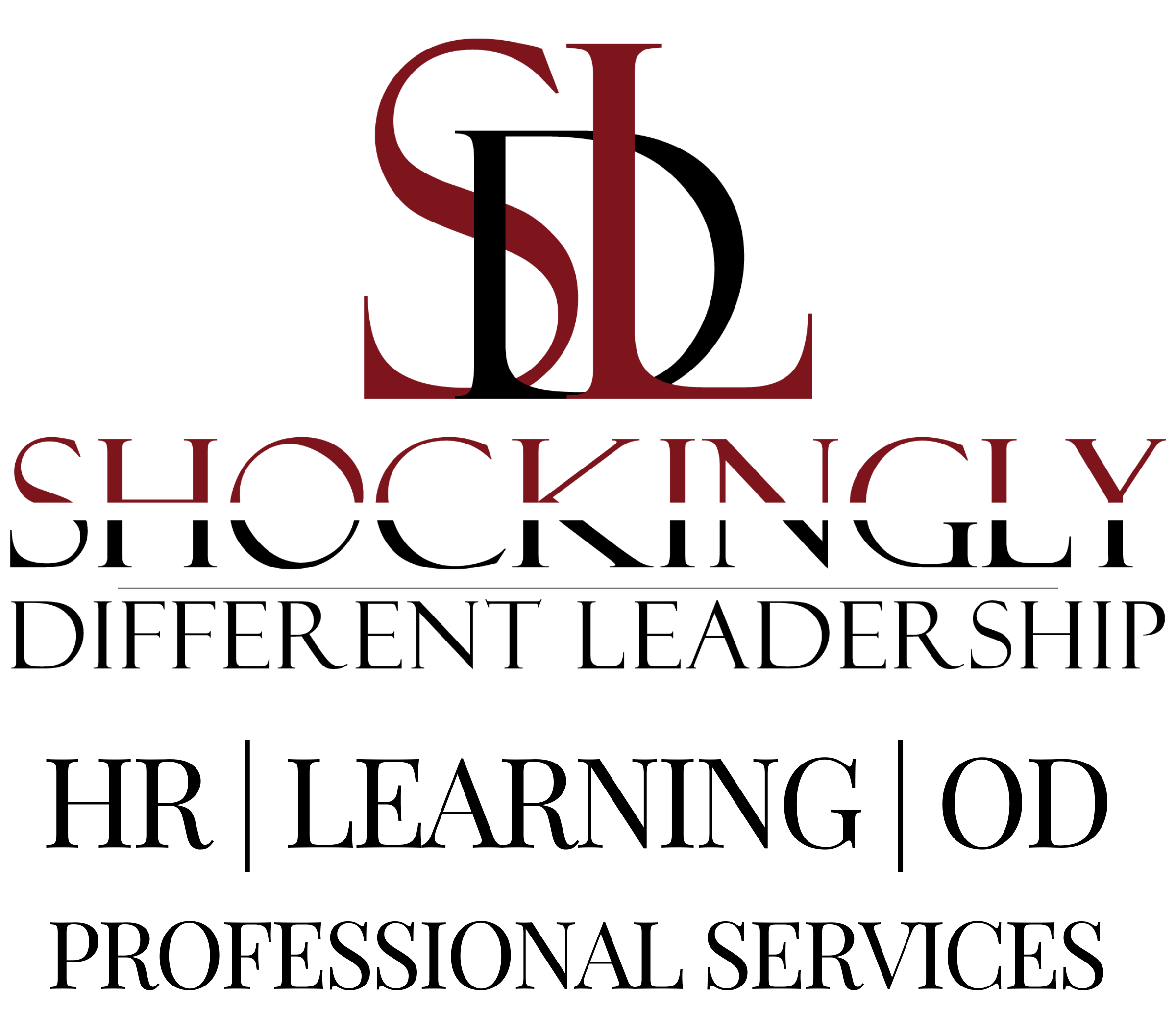
#KeepInTouch
via our podcast alerts
Subscribe now to discover why thousands of monthly listeners who are passionate about doing their best work prioritize time each week to listen to the Lead at the Top of Your Game podcast.
#AboutSDL
Shockingly Different Leadership is a human capital professional services consultancy that provides organizations access to the best consulting expertise in the areas of Talent Development, Organizational Development, and Human Resources – on an on-demand, project, or contract basis.
#WhereToFindUs
MAILING
4480-H South Cobb Drive
PMB 219
Smyrna, GA 30080
PHYSICAL
2121 NewMarket Parkway
Ste. 108
Marietta, GA 30067
#ContactOptions
Customer Service Email:
service@shockinglydifferent.com
Call or Text:
770-384-1103
#Office Hours
MON-FRI
8:30 AM – 6:30 PM
Weekends By Appointment

